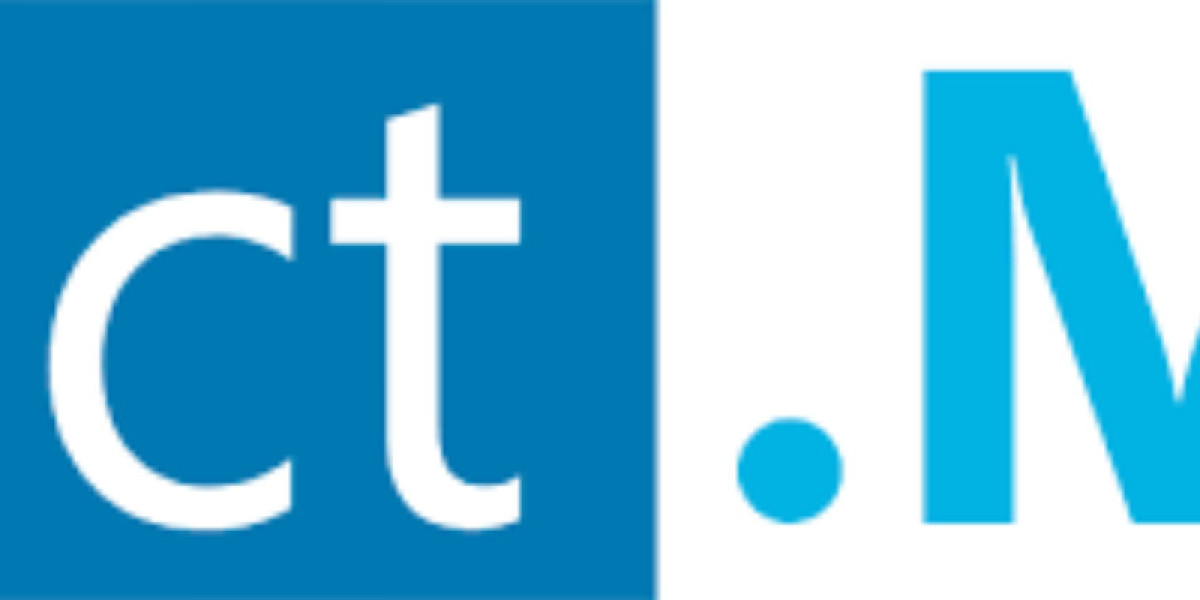The global glyoxal market is valued at USD 1.66 billion in 2025. As per Fact.MR analysis, it will grow at a CAGR of 4.4% and reach USD 2.79 billion by 2035, owing to increasing demand from the textile and paper packaging industries due to cross-linking and reinforcing effects. This expansion reflects the chemical’s increasing importance across diverse industries, particularly textiles, paper packaging, and emerging sectors like pharmaceuticals and personal care. As sustainability becomes a global priority, glyoxal’s role in eco-friendly applications positions it as a key player in the chemical industry’s transformation.
The market’s growth is fueled by rising demand for biodegradable and sustainable chemicals, aligning with global environmental regulations and consumer preferences. Glyoxal’s versatility as a cross-linking agent and its compatibility with green chemistry initiatives make it indispensable in industries seeking high-performance, environmentally responsible solutions. Investors, manufacturers, and policymakers in the chemical, textile, and packaging sectors will find significant opportunities as the market evolves over the next decade.
Browse for A Report: https://www.factmr.com/report/880/glyoxal-market
Sustainable Demand and Industrial Applications Driving Growth
The glyoxal market’s upward trajectory is propelled by several key drivers:
- Sustainability and Green Chemistry: Global demand for eco-friendly chemicals is surging, particularly in textiles and paper packaging, where glyoxal enhances fabric strength and paper durability. Its biodegradable properties align with bans on single-use plastics, boosting its use in sustainable packaging solutions.
- Textile and Packaging Boom: The textile industry relies on glyoxal for wrinkle resistance and fabric stiffness, while the paper packaging sector leverages its ability to improve wet and dry strength, especially in e-commerce and FMCG applications.
- Emerging Applications: Growth in pharmaceuticals and personal care, where glyoxal serves as a cross-linking agent, pH controller, and antimicrobial, is opening new revenue streams. Its use in water-based, non-toxic formulations aligns with consumer demand for safer products.
- Regulatory Support for Green Alternatives: Governments worldwide are incentivizing sustainable manufacturing, with policies like REACH and EPA regulations encouraging low-toxicity chemicals like glyoxal over formaldehyde-based alternatives.
The paper and packaging segment, projected to grow at a 5.9% CAGR from 2025 to 2035, leads the market due to rising demand for moisture-resistant, recyclable packaging. The cross-linking polymer application, growing at 4.4% CAGR, remains critical for textiles, paper, and emerging uses like biomedical hydrogels.
Regional Growth Insights: Opportunities in Emerging Markets
- China: Leading global growth with a 5.2% CAGR, China’s massive textile, paper, and chemical industries drive glyoxal demand. Government support for green manufacturing and pollution control further accelerates adoption, though regulatory compliance and competition from alternatives pose challenges.
- India: As the fastest-growing market, India benefits from rapid industrialization and demand for sustainable textiles and packaging. Local production and partnerships are key to capitalizing on this growth.
- United States: With a 4.2% CAGR, the U.S. market is driven by established industries like oil & gas, textiles, and packaging. Investments in R&D for safer glyoxal applications and biodegradable packaging are creating new opportunities.
- Europe (Germany, France, UK, Italy): Europe’s focus on sustainability and stringent regulations fuels glyoxal demand. France (4.7% CAGR), the UK (4.5% CAGR), Germany (4.3% CAGR), and Italy (4.6% CAGR) are leveraging green chemistry incentives and consumer demand for eco-friendly products, though regulatory hurdles and economic volatility require strategic innovation.
- Asia-Pacific (South Korea, Japan): South Korea (4.8% CAGR) and Japan (4.2% CAGR) are driven by high-tech manufacturing and environmental priorities. Glyoxal’s role in textiles, electronics, and personal care aligns with their focus on innovation and safety.
- Australia & New Zealand: Growing at a 4.0% CAGR, these markets face limitations due to reliance on imports but are supported by demand for eco-friendly chemicals in agriculture and textiles.
Challenges and Risks: Navigating a Complex Landscape
Despite its promising outlook, the glyoxal market faces several challenges:
- Raw Material Volatility: Fluctuations in ethylene glycol and acetaldehyde prices, driven by petrochemical market dynamics, impact production costs and profitability.
- Regulatory Pressures: Stringent regulations from REACH and the EPA require costly compliance measures, such as safer formulations and emissions controls, particularly for smaller manufacturers.
- Health and Environmental Concerns: Studies linking glyoxal to skin and respiratory irritation have raised concerns, prompting demand for safer alternatives and bio-based chemicals.
- Competition from Substitutes: Emerging cross-linking agents and bio-based chemicals challenge glyoxal’s market share, especially in cost-sensitive developing markets.
- Geopolitical and Trade Barriers: Export quotas, anti-dumping measures, and geopolitical tensions disrupt supply chains, affecting global availability.
Competitive Landscape: Industry Leaders and Strategies
Leading companies like BASF SE (15-18% market share), Huntsman Corporation (12-15%), Eastman Chemical Company (10-12%), The Dow Chemical Company (8-10%), and Oxea GmbH (6-8%) dominate the market through innovation, global reach, and sustainability-focused portfolios. These players invest heavily in R&D for bio-based glyoxal derivatives, water-based formulations, and low-emission production processes.
Key strategies include:
- Product Innovation: Developing greener, non-toxic glyoxal variants to meet regulatory and consumer demands.
- Geographic Expansion: Targeting high-growth regions like Asia-Pacific and Latin America through local production and partnerships.
- Sustainability Investments: Aligning with ESG goals to attract green finance and comply with environmental regulations.
- Strategic Alliances: Collaborating with research institutions, technology firms, and end-users to co-develop tailored solutions.
Other notable players, including SABIC, Royal DSM, Lonza Group, and Clariant, are leveraging technological advancements and regional expertise to gain market share.
Investor and Stakeholder Opportunities
The glyoxal market’s 4.4% CAGR presents a stable investment opportunity in the chemical sector. Stakeholders should focus on:
- Green Chemistry Innovation: Investing in R&D for bio-based feedstocks and sustainable production to meet regulatory and consumer demands.
- Emerging Market Expansion: Capitalizing on industrialization in Asia-Pacific and Latin America through localized production and supply chain optimization.
- Regulatory Compliance: Partnering with firms that prioritize low-toxicity formulations to navigate stringent regulations.
- Technology Integration: Supporting startups and tech firms developing AI-driven production and supply chain solutions for efficiency and transparency.
Want a Sample Before Buying? Download Free Sample: https://www.factmr.com/connectus/sample?flag=S&rep_id=880
Conclusion: A Future-Ready Chemical Market
As global industries prioritize sustainability, the glyoxal market is poised for consistent growth through 2035. Its critical role in textiles, packaging, and emerging sectors like pharmaceuticals, combined with alignment with green chemistry trends, makes it a cornerstone of the chemical industry’s evolution. For investors, manufacturers, and policymakers, the glyoxal market offers a compelling opportunity to lead in sustainable innovation and capitalize on the global shift toward eco-friendly solutions.
Explore More Related Studies Published by Fact.MR Research:
mRNA Sequencing Market: https://www.factmr.com/report/mrna-sequencing-market
Cryogenic Capsules Market: https://www.factmr.com/report/cryogenic-capsules-market
Foam Mesh Sleeves Market: https://www.factmr.com/report/foam-mesh-sleeves-market
Biopharmaceuticals Packaging Market: https://www.factmr.com/report/biopharmaceuticals-packaging-market
Plant Oil Based Printing Inks Market: https://www.factmr.com/report/plant-oil-based-printing-inks-market
Breathable Bags Market : https://www.factmr.com/report/breathable-bags-market
Dermocosmetics Market: https://www.factmr.com/report/dermocosmetics-market
Marine Auxiliary Engine Market: https://www.factmr.com/report/marine-auxiliary-engine-market
About Fact.MR
We are a trusted research partner of 80% of Fortune 1000 companies across the globe. We are consistently growing in the field of market research with more than 1000 reports published every year. The dedicated team of 400-plus analysts and consultants is committed to achieving the utmost level of our client’s satisfaction.
Contact:
11140 Rockville Pike
Suite 400
Rockville, MD 20852
United States
Tel: +1 (628) 251-1583
Sales Team: sales@factmr.com
Follow Us: LinkedIn | Twitter | Blog








